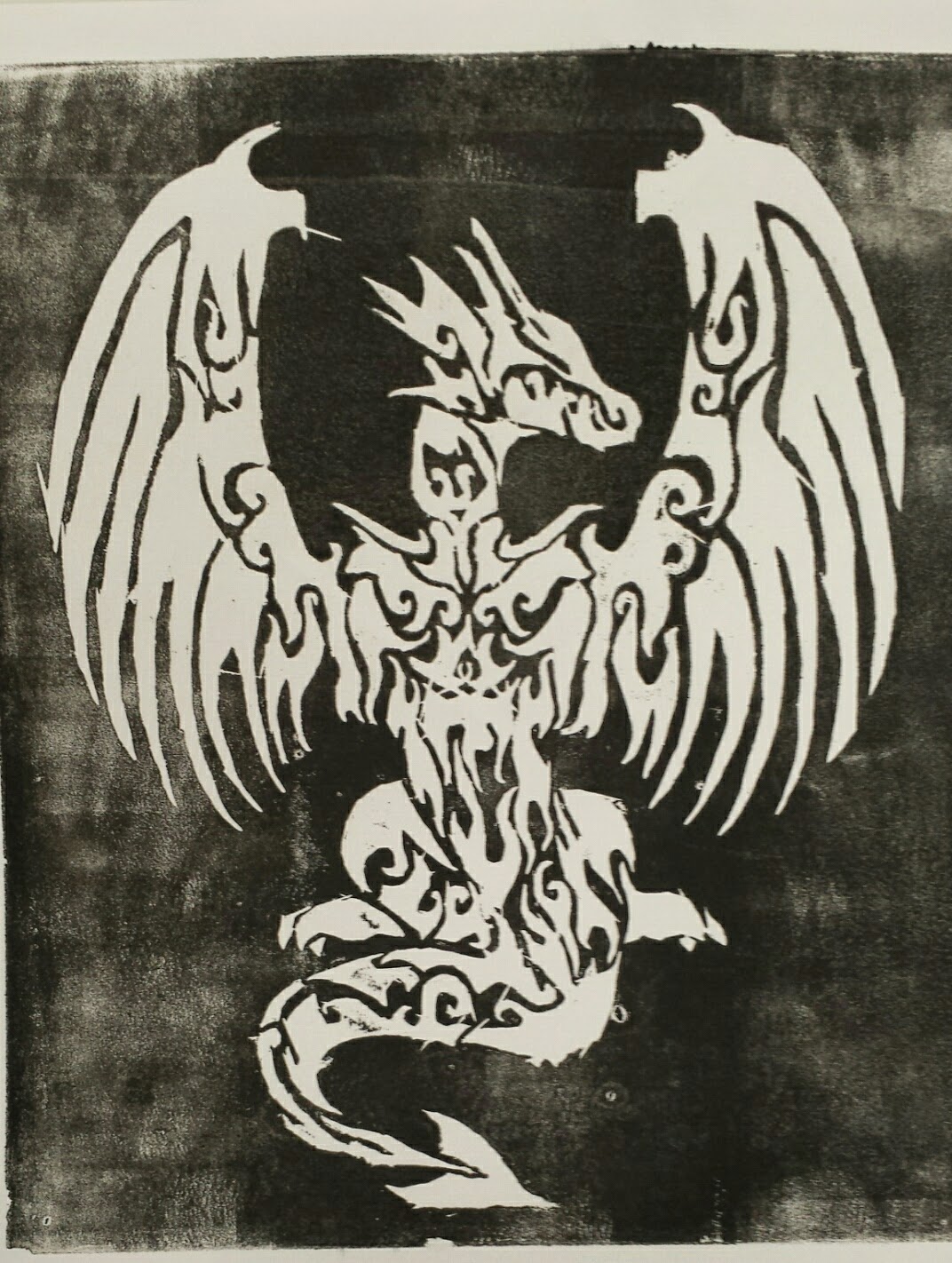Planographic - lithography: a drawing is completed on a smooth block of limestone using a grease pencil. The stone is treated with nitric acid and gum arabic, cleaning and etching the stone. Water is then sponged on the block. Ink is rolled on the stone, accepted by the greased areas. I dampened sheet of paper is then placed on the block which then undergoes a scraping process of the lithographic press. The results can be quite extraordinary. Here is an example, taken from Fox Talbot's "Pencil of Nature":
The second medium we discussed today was the Relief process, in particular the woodcut. An artist draws an image on a wooden block. The printmaker then gouges away the area that will not receive ink for the final print. If the paper is white, the printmaker gouges away the white areas in varying degrees. The block is then rolled with ink using a brayer, and then pressed in a printing press. Here is an example, entitled "East Side New York", by Albert Potter:
Tomorrow: The Intaglio Process and The Stencil Process.
Excerpts from "Relief Print-Making" by Gerald F. Brommer.
Wednesday 14 May 2014
Tuesday 13 May 2014
Printmaking
Here is the "Buxheim St. Christopher" print dating to 1423.
At the dawn of the Renaissance, artists called for finer lines and detail in their prints, so a technique of printing from metal, rather than wood blocks, came into fashion. These "Intaglio" prints demonstrated a master of the etching techniques that date to the mid-fifteenth century. Albrect Durer, of the North Renaissance movement, was particularly masterly in his work, as exemplified by "Melencolia I", seen below.
Here is a description of the work, taken from www.ivc.edu:
"Made in 1514 and titled Melencolia I, the engraving became one of the most famous of Albrecht Durer's prints. Although Albrecht Durer produced many prints throughout his life, his Melencolia I became one of his most famous prints. The engraving became a representative of modern thinking, and has been researched and studied by many people before. The title of the engraving is written on it on the top, left-hand side. The print shows a figure sitting, in the edge of the image, in a room surrounded with many different scientific, and mathematical tools. Sitting on a wheel next to the figure is a baby angel. Some of the mathematical tools that in the print include a compass, a scale, magic square, an hourglass, a geometric solid. The magic square says has the date that the print was produced, 1514. When the numbers on the magic square are added, from any row (horizontally, vertically, or diagonally) the result is always the number 34. There were many interpretations on the meaning behind the scene in the engraving. The most famous interpretation is that the figure in the image is trying to invent something genius. Because the figure is unable to invent something, he sits hopeless and depressed, creating the melancholic mood of the picture from which its name is derived."
Progressing through history, multi-coloured block printing gained its own movement in Japan in the mid-1700s. We previously discussed Katsushika Hokusai's "The Great Wave at Kanagawa".
Modern techniques vary, but are firmly rooted in various applications throughout history. We focus primarily on the woodblock relief, utilizing MDF board as our printing block. Here is an example of the print that Meryn made in class yesterday:
Great work Meryn!
Wednesday 7 May 2014
Week One: Creative Arts for Expression and Enjoyment
It has been a fun first week for our newest class! Let's recap some of the fun we've had!
We started with building our "Name Design" portfolios!
And then we collaborated on an "Abstract Expressionism" painting on a ceiling tile. It will hang up there for years to come!
We started with building our "Name Design" portfolios!
And then we collaborated on an "Abstract Expressionism" painting on a ceiling tile. It will hang up there for years to come!
After that we each chose a vinyl record and chose one word that the record had on it. That word became our "Theme". Here's Cobie's record. Her theme is "Time".
We also learned how the 3D printer works. We printed a statue of Olaf from Disney's "Frozen".
And then we collaborated with the wood shop class to paint their duck projects!
That is a pretty good start. Keep up the good work!
Subscribe to:
Posts (Atom)











